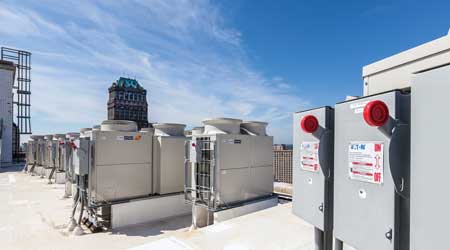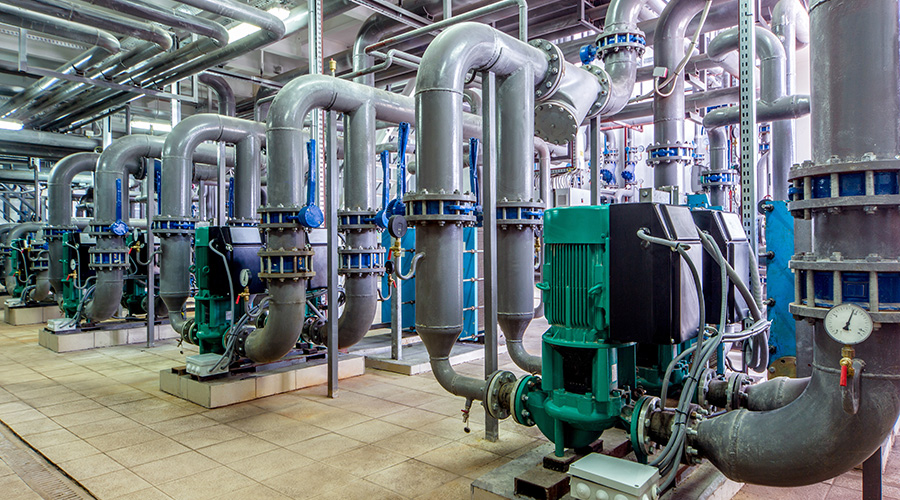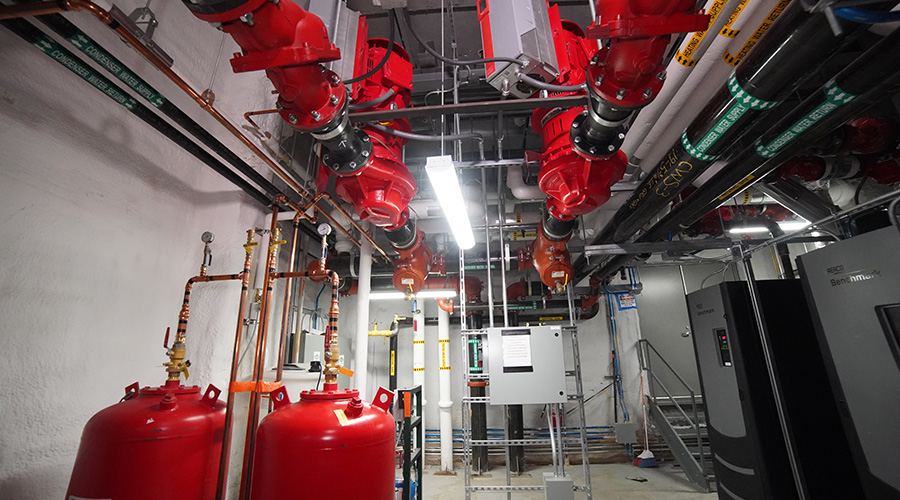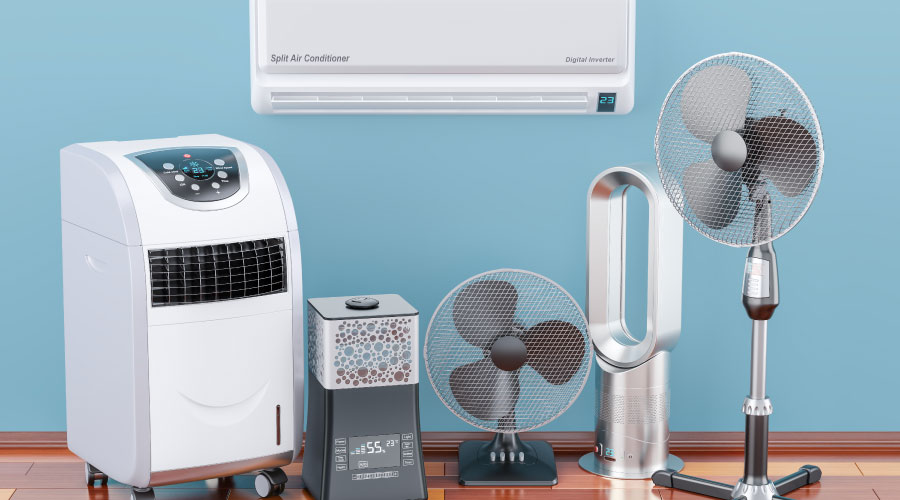Keep Your Eye on These 3 HVAC Updates (#3. VRF Systems)
Part 3 of a 3-part article on why VRFs are gaining ground, popular refrigerants may be phased out, and pumps present an overlooked way to save energy.
An increasingly popular air conditioner and heat pump technology, variable refrigerant flow systems (VRFs) offer one way to resolve the dilemma of buildings that need both air conditioning and space heating in different zones.
“Because a single outdoor compressorized unit can serve multiple thermostatically controlled indoor fan coils, multiple control zones can be provided very cost effectively, allowing thermostats in every room, if desired,” says Daniel N. Nall, vice president and regional director of high performance solutions at Syska Hennessy Group, Inc. “Favorable acoustics and reduced space requirements compared with competing systems are also advantages.”
With VRFs, the compressor can be located outside, away from the rooms. In addition, the fan coil features a variable speed fan motor with a soft start that makes the units much quieter than the single-package water source units, according to Nall.
Another plus comes when buildings simultaneously need heating in some areas and cooling in other zones. In those cases, VRFs “can meet the requirements of the smaller of the two load types with little additional energy expenditure,” Nall says. VRFs do this by pumping heat captured in the cooling zones to other parts of the building requiring heat.
VRFs operate as heat pumps. In cooling mode, the outdoor unit operates as a refrigerant condensing unit, while the indoor fan coil performs as an evaporator unit. For heating, these two roles are reversed. The outdoor unit becomes the evaporator and the indoor fan coils operate as condensers. Both the indoor and outdoor units generally are driven by variable speed motors, making them “particularly efficient when operating at part load,” explains Nall.
When roof space is available, air source VRFs offer options for hotels and college dorms. “They should be used with dedicated outdoor air systems to provide continuous ventilation to the space, allowing the VRF units to cycle off should no load exist in the space,” notes Nall.
The difference between air source and water source systems in heating mode is that air source heat pumps draw heat from the cold outdoor air. Water source units need fuel-fired boilers to make up the heat withdrawn from the tempered-water circulating loop.
“Water source VRF is a good solution in warm climates with little heating load,” says Nall. “Water source VRF is not so good for climates with large heating loads, unless the building has a significant year-round cooling load such as a server room.”
Facility managers should be aware of the amount of refrigerant used in a typical system’s compressor unit, fan coils, and refrigerant piping, Nall says.
ASHRAE/ANSI Standard 34 specifies the refrigerant concentration limit for each refrigerant. For refrigerant R410A, commonly used in VRF systems, that maximum concentration is 26 pounds per 1,000 cubic feet of normal space, or 13 pounds per 1,000 cubic feet for institutional space, explains Nall.
“The designer must evaluate the quantity of refrigerant available to leak into the space against the volume of the smallest space served,” Nall observes. n
Rita Tatum, a contributing editor for Building Operating Management, has more than 30 years of experience covering facility design and technology.
Email comments and questions to edward.sullivan@tradepress.com.
Top photo caption/credit: In a variable refrigerant flow (VRF) system, an outdoor compressing unit can serve multiple indoor fan-coil units. Shown here are outdoor VRF units on the David Whitney Building in Detroit. Credit: Mitsubishi
Related Topics:














